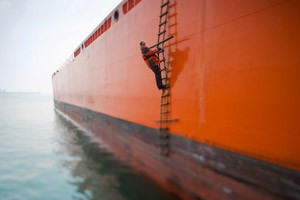
To meet the situs requirement, your injury must have occurred either on a ship/boat/vessel, or somewhere where boats or watercraft are docked. This could be a wharf, dock, pier or terminal—injuries at or near any of these locations will likely meet the situs test.
The next obvious question is “how near is near?” The statute does not specify, but in its application, once you are more than a mile from a location where ships dock or are worked on, courts become less likely to allow you to qualify for benefits. A recent opinion from the U.S. Court of Appeals for the 5th Circuit (Louisiana) held that the injury location must actually adjoin or abut navigable waters. If there is any property between the location of the injury and the nearest navigable water, the LHWCA does not apply.
The Status Test under the Longshore and Harbor Workers’ Compensation Act
Individuals who work in the maritime industry can see workers’ compensation benefits under the Longshore and Harbor Workers’ Compensation Act, a federal statute comparable to many state workers’ compensation laws. The LHWCA allows a qualified worker who has been injured on the job to recover temporary or permanent benefits for either partial or total disability. The inured maritime worker can also seek reimbursement or payment of all reasonable or necessary medical expenses related to the injury.
Before you can collect benefits, though, you must meet the “situs,” or location test under the LHWCA. This requirement looks at where you worked to determine your eligibility for benefits. As a general rule, only persons who work on, near or adjacent to navigable waters qualify for benefits under the LHWCA for injuries sustained on the job.
Contact Uliase & Uliase
At Uliase & Uliase, our attorneys have considerable knowledge of laws governing federal workers. To schedule an appointment, contact our office online or call us at 856-310-9002. We will meet with you weekdays between 9 a.m. and 5 p.m. We offer a free consultation for injured workers.

